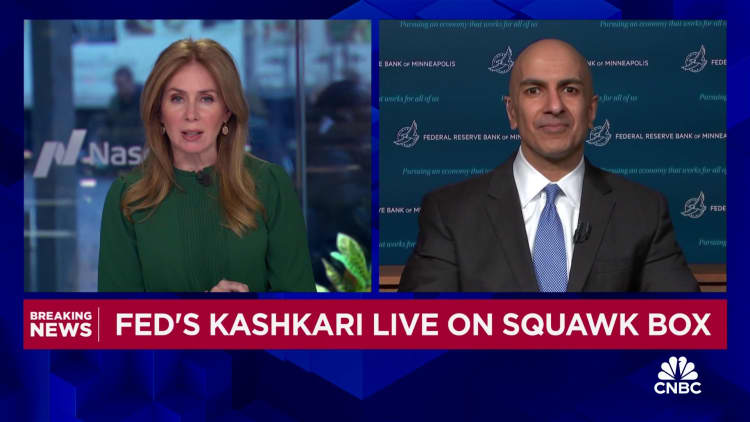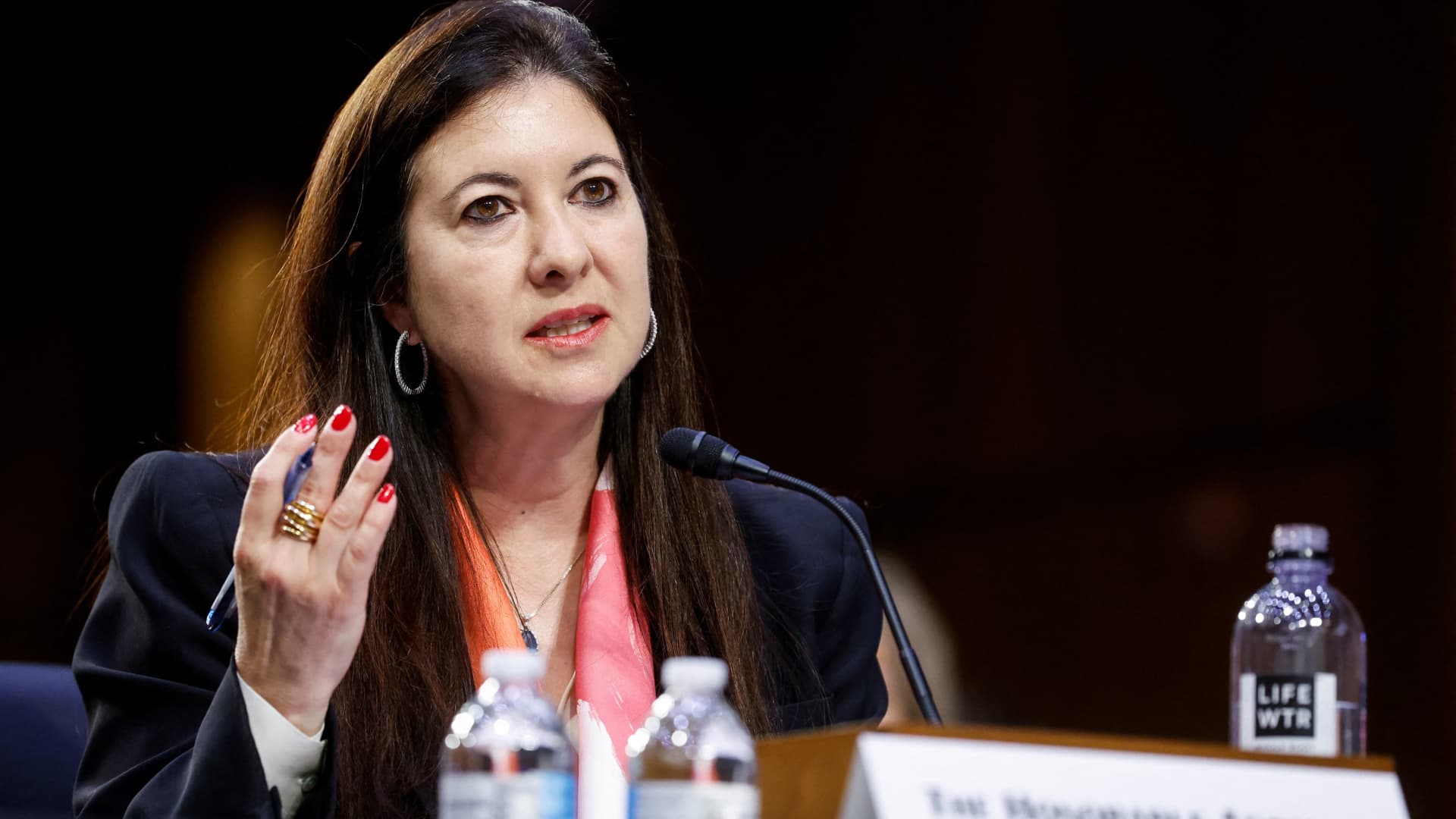
Federal Reserve Governor Adriana Kugler said Wednesday inflation is showing solid signs of slowing down, but she is not ready yet to start lowering interest rates.
In her first major policy address since being confirmed to the Board of Governors in September 2023, Kugler said three factors are converging to ease inflation pressures: moderating wage growth, changes in how often companies are raising prices and survey indicators that the pace of price increases is expected to continue to fall.
With all that in mind, however, Kugler wants more confidence that it’s time to cut rates.
“So I am pleased with the disinflationary progress thus far and expect it to continue. I must emphasize, however, that the [Federal Open Market Committee’s] job is not done yet,” she said in remarks for speech to the Brookings Institution in Washington, D.C. “
“At some point, the continued cooling of inflation and labor markets may make it appropriate to reduce the target range for the federal funds rate,” Kugler added. “On the other hand, if progress on disinflation stalls, it may be appropriate to hold the target range steady at its current level for longer to ensure continued progress on our dual mandate.”
The policymaker added that she expects consumer spending to grow and core services inflation excluding housing to pull back. Additionally, she sees indications that firms which raised their prices frequently during the big inflation run-up of 2021-22 are doing so less now.
Should inflation continue to recede toward the Fed’s 2% goal, that likely will lead to cuts later this year. However, like other Fed officials, Kugler did not commit to a timetable, despite market pricing for aggressive reductions ahead.
“It all depends,” Kluger said on the pace of rate cuts once the Fed does move. “I don’t think we can call it out now.”
As a governor, Kugler, the first Latina to hold the position in Fed history, is a permanent FOMC voter.
“I am pleased by the progress on inflation, and optimistic it will continue, but I will be watching the economic data closely to verify the continuation of this progress,” Kugler said.
Earlier in the day, Minneapolis Fed President Neel Kashkari also expressed caution about cutting rates too quickly.
Two or three rate cuts expected
“Sitting here today, I would say, two or three cuts would seem to be appropriate for me right now,” Kashkari said during a CNBC “Squawk Box” interview. “But again, I don’t want to prejudge things, but that’s, that’s my gut, based on the data we have so far.”
Markets have been pricing in an aggressive path this year for the Fed, with the first reduction happening as soon as May and five total quarter percentage point cuts happening before the end of the year, according to the CME Group’s FedWatch measure of futures pricing.
However, multiple Fed officials have been pushing back on that narrative. Fed Chair Jerome Powell a week ago and again during a “60 Minutes” interview that aired Sunday on CBS all but completely took a March cut off the table and said he expects policymakers to move carefully as they measure the progress of inflation against broader economic growth.
“We just need to look at the actual inflation data to guide us,” Kashkari said. “So far, the data has been resoundingly positive. I hope it continues. And then the question will simply be, at what pace do we then start to adjust rates back down?”
He added that there are “compelling arguments to suggest we could be in a longer, higher rate environment going forward.”
Kashkari is a nonvoting member this year on the FOMC.
Earlier this week, he penned an essay that ran on the Minneapolis Fed site where he suggested that the real fed funds rate when adjusted for inflation may not be as high as it looks. In a series of hikes that ran from March 2022 to July 2023, the FOMC took its benchmark overnight borrowing rate from near zero to a target range between 5.25%-5.5%, the highest in 23 years.
However, economic data has held solid during that time. Kashkari said the trend indicates that interest rates may not be exerting as much pressure on the economy as expected. Labor market growth has stayed strong as consumers continue to spend.
“That’s all really good news, and that tells me maybe monetary policy is not putting as much downward pressure on demand as we would otherwise think,” he said. “That gives us more time to access that data before we start reducing interest rates. So I think this is a good problem to have.”
Also Wednesday, Boston Fed President Susan Collins added to the cautionary tone, saying that recent signs of strength in consumption and employment show that it could take a while until the economy settles into a 2% inflation pace.
“While heartened by the progress to date, I will need to see more evidence before considering adjusting the policy stance,” Collins said remarks for a speech to the Boston Economic Club. “As we gain more confidence in the economy achieving the Committee’s goals, and consistent with the last set of projections from FOMC participants, I believe it will likely become appropriate to begin easing policy restraint later this year.”
However, Collins did not put a timetable on when it might be appropriate to cut rates. Moreover, she noted that the path to get back to the Fed’s inflation goal could get “bumpy” and emphasized the importance of a policy determined to defeat inflation.
There are multiple Fed speakers during the day. This story will be updated to reflect other developments.
